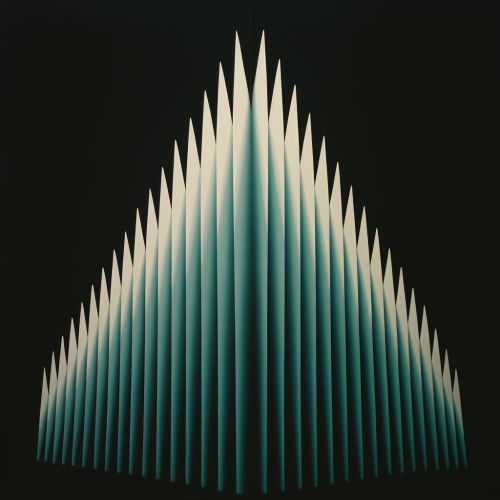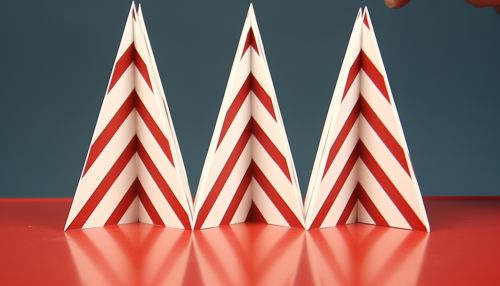Müller-Lyer illusion
Introduction
The Müller-Lyer illusion is a well-known optical illusion in which two lines of the same length appear to be of different lengths due to the orientation of arrow-like fins at the ends of the lines. This illusion was first described by the German psychologist Franz Carl Müller-Lyer in 1889. The illusion has been extensively studied in the field of psychophysics, a branch of psychology that deals with the relationships between physical stimuli and the sensations and perceptions they produce.


Explanation of the Illusion
The Müller-Lyer illusion is typically presented as a pair of horizontal lines of equal length, each terminated by short vertical lines or "fins". The fins on one line are inward-pointing (like arrow tails), while those on the other line are outward-pointing (like arrowheads). Despite the horizontal lines being of equal length, the line with the outward-pointing fins appears to be longer than the line with the inward-pointing fins.
There are several theories that attempt to explain the Müller-Lyer illusion. One of the most prominent is the "misapplied size constancy scaling" theory proposed by Richard Gregory. According to this theory, the illusion is a consequence of the brain's attempt to interpret the lines as three-dimensional objects. The line with outward-pointing fins is perceived as an object receding into the distance, while the line with inward-pointing fins is perceived as an object extending towards the viewer. As a result, the brain adjusts the perceived length of the lines to account for the perceived distance, causing the line with outward-pointing fins to appear longer.
Another theory, known as the "conflicting cues theory", suggests that the illusion arises from the brain's attempt to reconcile conflicting cues about the length and orientation of the lines. The horizontal lines provide a cue about their length, while the fins provide a cue about their orientation. When these cues conflict, the brain gives more weight to the orientation cue, resulting in the illusion.
Experimental Studies
Numerous experimental studies have been conducted to investigate the Müller-Lyer illusion. These studies have used a variety of methods, including psychophysical measurements, neuroimaging techniques, and computational modeling, to gain insights into the underlying mechanisms of the illusion.
One of the earliest experiments, conducted by F. H. Allport and D. A. MacKay, found that the illusion is stronger when the lines are longer and the fins are larger. This finding supports the misapplied size constancy scaling theory, as these conditions would enhance the perception of the lines as three-dimensional objects.
More recent studies have used neuroimaging techniques, such as functional magnetic resonance imaging (fMRI) and electroencephalography (EEG), to examine the neural correlates of the Müller-Lyer illusion. These studies have found that the illusion is associated with activity in several areas of the brain, including the primary visual cortex, the extrastriate cortex, and the parietal cortex. These areas are involved in visual perception and spatial processing, suggesting that the illusion arises from the brain's processing of visual and spatial information.
Computational modeling studies have also been conducted to simulate the Müller-Lyer illusion. These models typically incorporate elements of the misapplied size constancy scaling theory and the conflicting cues theory, and use mathematical equations to represent the brain's processing of visual and spatial information. The models have been successful in reproducing the illusion, providing further evidence for these theories.
Cross-Cultural Differences
Interestingly, the strength of the Müller-Lyer illusion appears to vary across different cultures. Studies conducted by Marshall H. Segall, Donald T. Campbell, and Melville J. Herskovits found that individuals from Western cultures, where rectangular shapes and linear perspective are common in the built environment, are more susceptible to the illusion than individuals from non-Western cultures, where such features are less prevalent. This finding suggests that the illusion may be influenced by visual experience and cultural factors.
Implications and Applications
The Müller-Lyer illusion has important implications for our understanding of visual perception and cognitive processing. It demonstrates that our perception of the world is not a simple reflection of the physical properties of stimuli, but is shaped by complex cognitive processes that interpret and make sense of the stimuli.
The illusion also has practical applications in various fields. In psychology, it is often used in research and teaching to illustrate the principles of visual perception and cognitive processing. In design and architecture, it can be used to create visual effects and illusions of space. In neuroscience, it can be used as a tool to investigate the neural mechanisms of visual perception.
